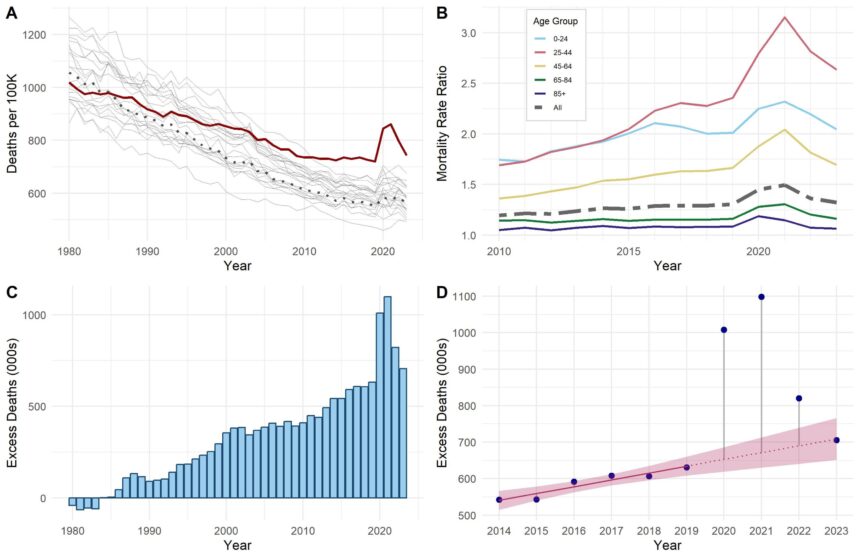The United States continues to experience a disturbing trend in excess deaths compared to other high-income countries, with over 1.5 million “missing Americans” in 2022 and 2023. These deaths represent individuals who would have been alive if US mortality rates were on par with peer nations. A recent study led by Boston University School of Public Health (BUSPH) researchers sheds light on this ongoing disparity in mortality rates.
Published in JAMA Health Forum, the study highlights the persistent rise in excess US deaths over the past four decades. While excess deaths peaked during the COVID-19 pandemic in 2021, the numbers remained alarmingly high in 2023, surpassing pre-pandemic levels. Even after the acute phase of the pandemic, the US saw 705,331 excess deaths in 2023, reflecting a concerning trend that has been unfolding for years.
Dr. Jacob Bor, the lead author of the study and associate professor of global health and epidemiology at BUSPH, emphasizes the gravity of the situation, stating that the US has been facing a health crisis for decades with outcomes significantly worse than other high-income countries. The study reveals that younger and working-age Americans are disproportionately affected, with 46% of deaths under 65 years old being potentially avoidable if US mortality rates matched those of its peers.
The study’s analysis of trends in US deaths from 1980 to 2021 compared to 21 other high-income countries underscores the magnitude of the issue. Approximately 14.7 million excess deaths occurred in the US during this period, with excess deaths accounting for nearly 23% of all deaths in the country in 2023. The COVID-19 pandemic exacerbated the situation, but the underlying causes of excess mortality predate the pandemic.
Dr. Andrew Stokes, senior author of the study and associate professor of global health at BUSPH, points to systemic failures and policy neglect as driving forces behind the US mortality disparity. The study highlights the need for evidence-based public health policies, universal healthcare, and strong safety nets to improve population health outcomes. However, challenges such as public distrust of government and political polarization hinder the implementation of effective policies.
Looking ahead, the researchers stress the importance of addressing the root causes of excess deaths in the US and learning from the successful strategies of other countries. Failure to take action could lead to a widening gap in health disparities and a surge in preventable deaths. By understanding and addressing the factors contributing to excess mortality, the US can work towards a healthier and more equitable future for all its citizens.
For more information, the study “Excess Deaths Before, During, and After the COVID-19 Pandemic” can be accessed in JAMA Health Forum. The research conducted by Boston University sheds light on the urgent need to address the longstanding health crisis in the United States and implement policies that prioritize the well-being of its population.








